A great spinach substitute with a long tradition of use around the world, Malabar spinach is perfect anywhere you'd use cooked leafy greens. An easy plant to cook, a simple stir fry with mushrooms is probably my favorite Malabar spinach recipe. If you haven't tried it yet it's a great place to start. Read on and I'll introduce you to a very special plant.
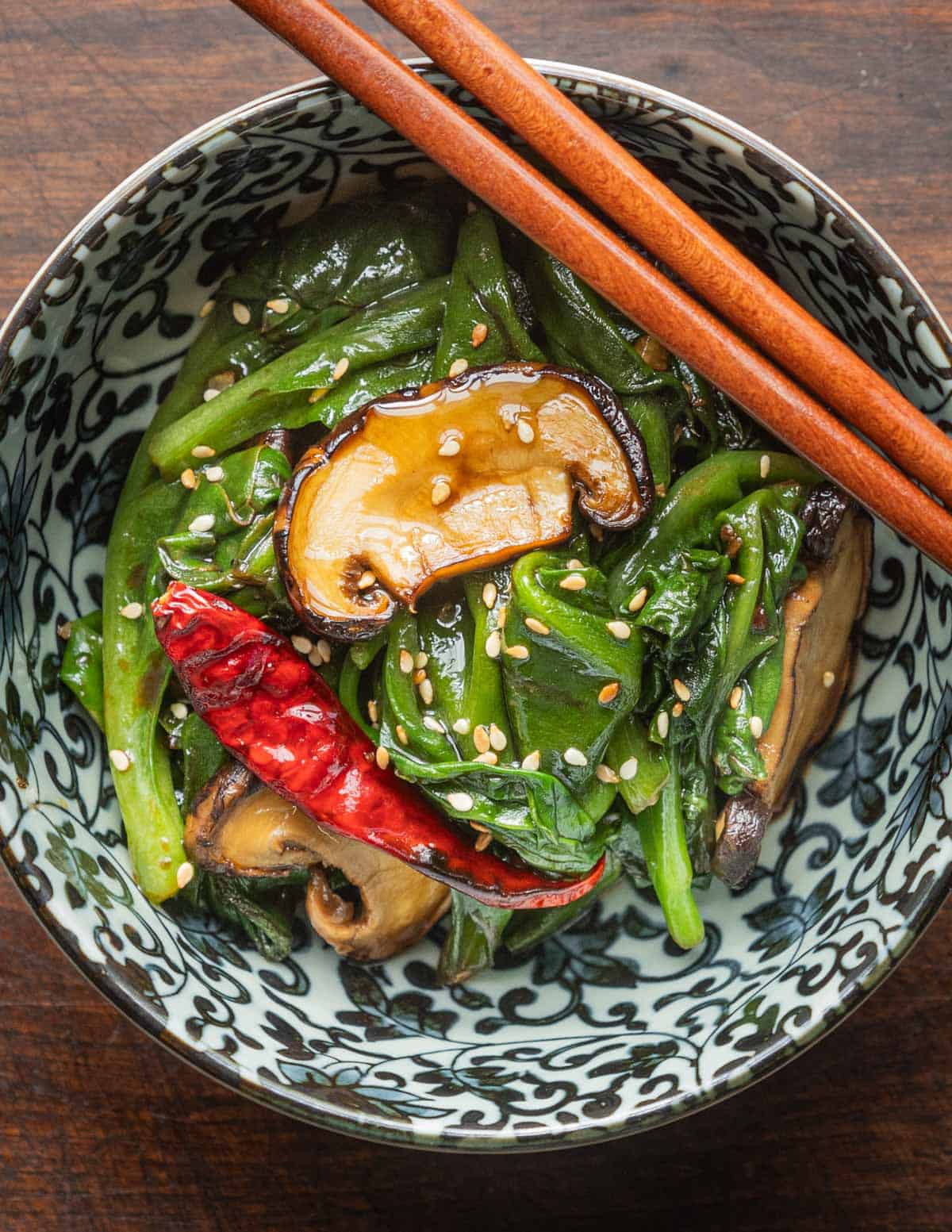
What is Malabar Spinach?
Basella alba is a perennial leafy green native to Asia widely used in Vietnamese, Indian and Pilipino cuisine. It looks similar to spinach, but is thicker and juicer, with a meaty texture. Alluding to one of its common names (vine spinach) Malabar spinach is a vine often cultivated as an edible ornamental. It would love to grow on a trellis or a fence in a garden.
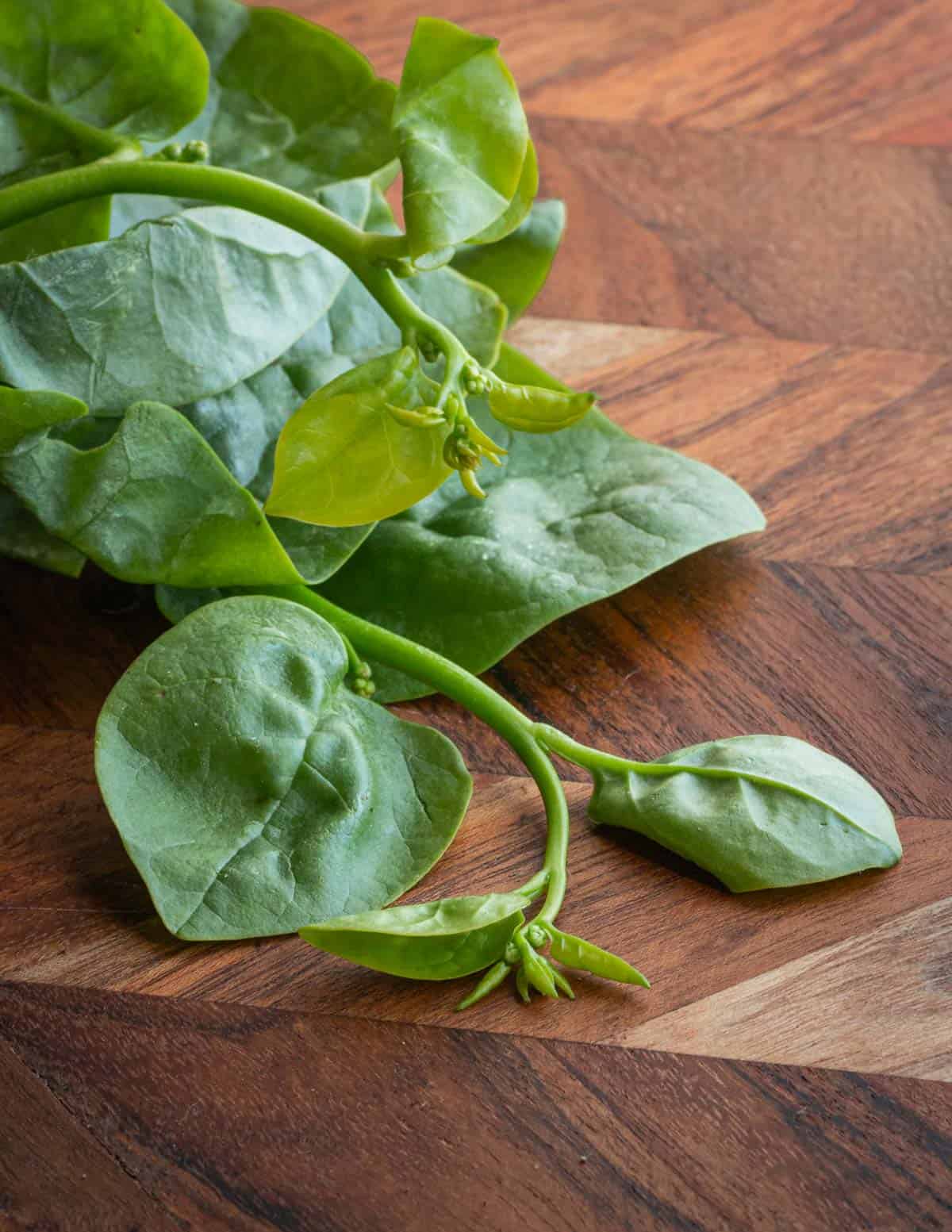
The plant is also surprisingly healthy green and a good source of vitamin C. According to the University of the District of Colombia, it has 3 times the vitamin C of spinach and 1.5 times the vitamin A of kale along with plenty of other vitamins in smaller amounts.
In this post I'm using Basella alba, but there's also red Malabar spinach (Basella rubra) which has red stems instead of green. The plant has many names and might be known as Ceylon spinach, Indian spinach, climbing spinach or vine spinach.
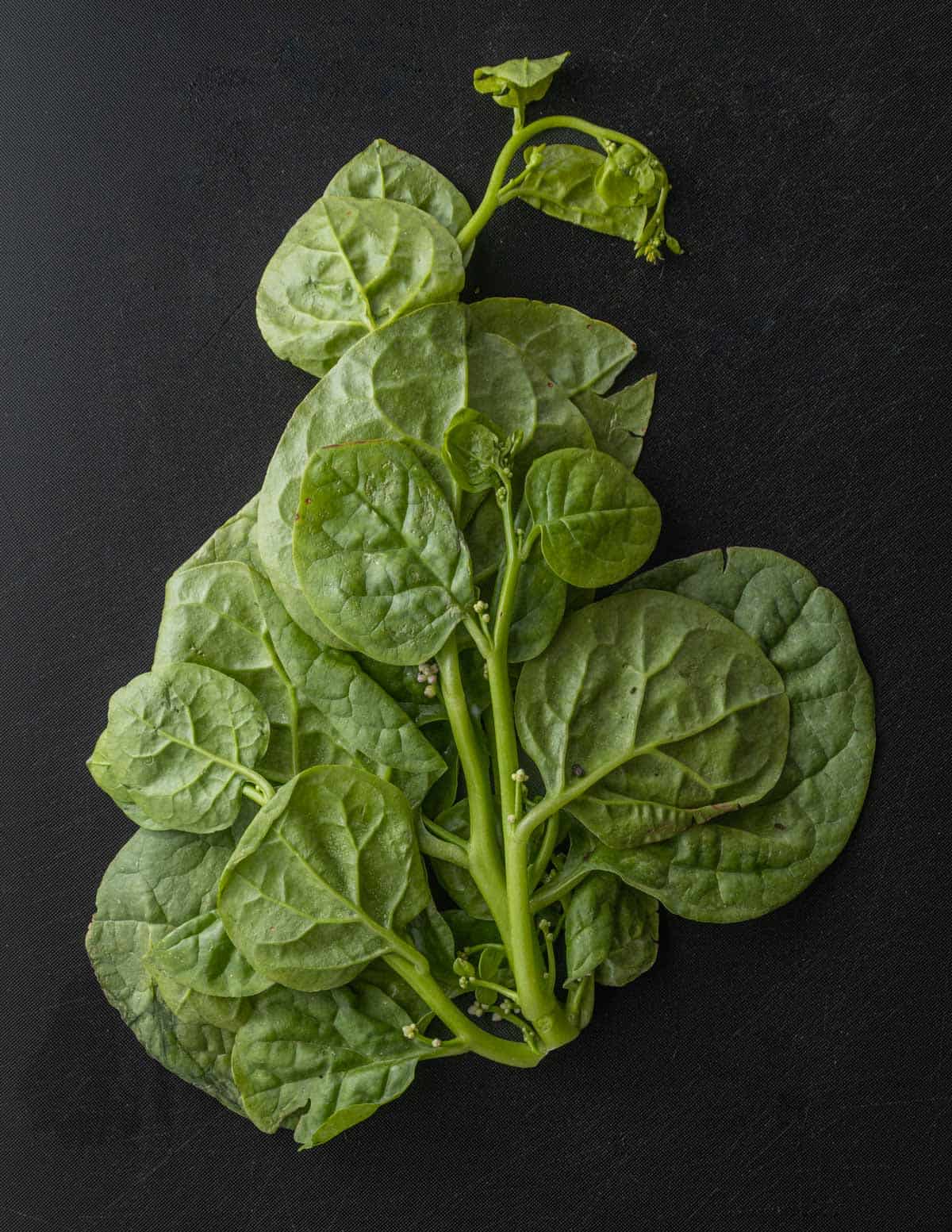
It's occasionally confused with Vietnamese water spinach which is more similar to watercress.
It’s a great plant more people should know about. I have a few friends that grow it and it's pretty easy to buy Malabar spinach seeds online.
Here's a quick list of common names from around the world used to describe it.
Common Names From Around the World
- Vietnamese Spinach (Mồng Tơi or Mong Toi)
- Poi Saag, Pui Shaak (Gujarati / India)
- Malabar Palak (Hindi)
- Malabar Nightshade (An English misnomer)
- Acelga Trepadora (Creeping or Climbing Chard / Spanish)
- Libato (Philippines / Malay)
- Alugbati (Cebuano / Philippines)
How to Cook Malabar Spinach
The plant is edible raw or cooked, but most people will prefer it cooked like regular spinach. Regional recipes vary in ingredients but the premise is the same. To cook Malabar spinach, the leaves are removed from the stem and simply cooked as you would any other leafy green.
Besides the stir fry in this post, it's often cooked in curries in India. You could also use it in my saag recipe I usually make with nettles.

A common misconception about the plant is that it's mucilaginous or slimy like okra but that only applies to eating the greens raw.
In some places (Africa) the young tender stems are cooked. But, if you buy Malabar spinach from an Asian grocer like I do, you'll want to inspect the plants for young flowers.
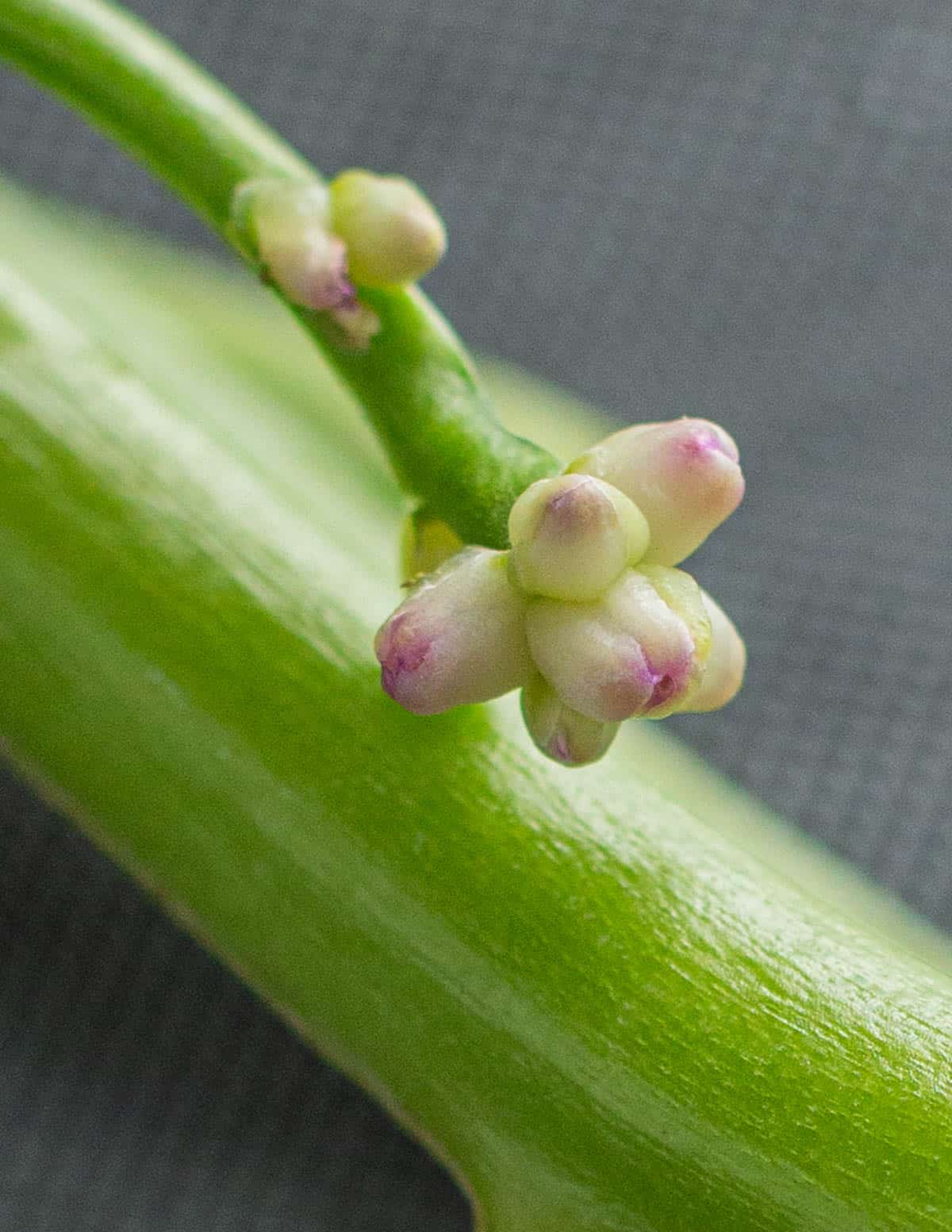
If you see flowers or seeds it means the stems won't be tender after cooking and should be discarded. If you grow Malabar spinach you'll have access to both the tender stems and leaves-both of which are good to eat.
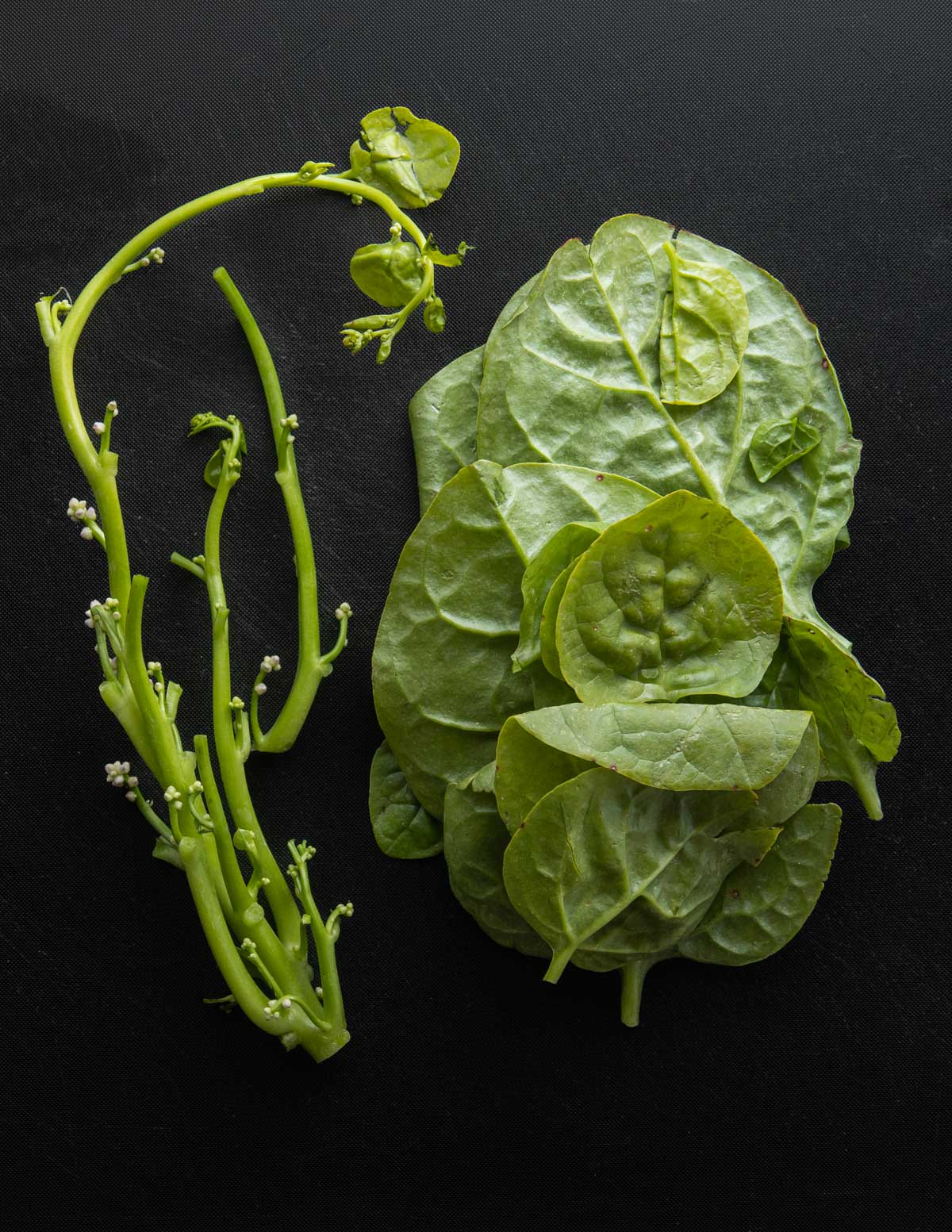
Stir Fry: The Easiest Malabar Spinach Recipe
Malabar spinach is good for cooking in any recipe that calls for spinach. Unlike spinach, it will keep more of its shape and texture after cooking, making it perfect for quick stir-fries.
My favorite version is just a simple stir fry with a handful of shiitake mushrooms, garlic, ginger, soy sauce, and hot chili. Here's how to make it.
For the best flavor the mushrooms should be cooked before oil is added to the pan. This allows them to brown, and is called a dry sauté. Sometimes I add whole dried red chilis for heat. A couple crushed garlic cloves can be used instead of minced, too.

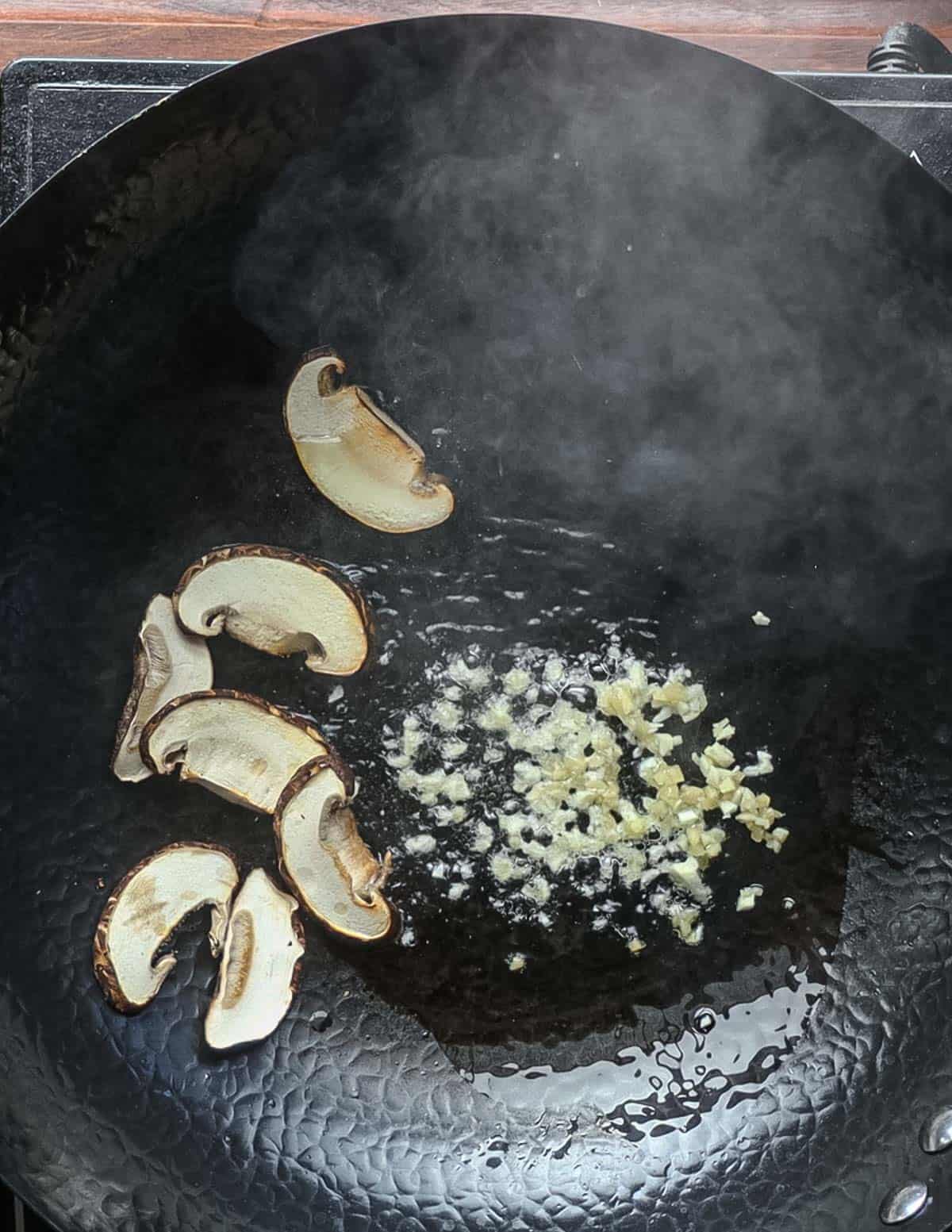
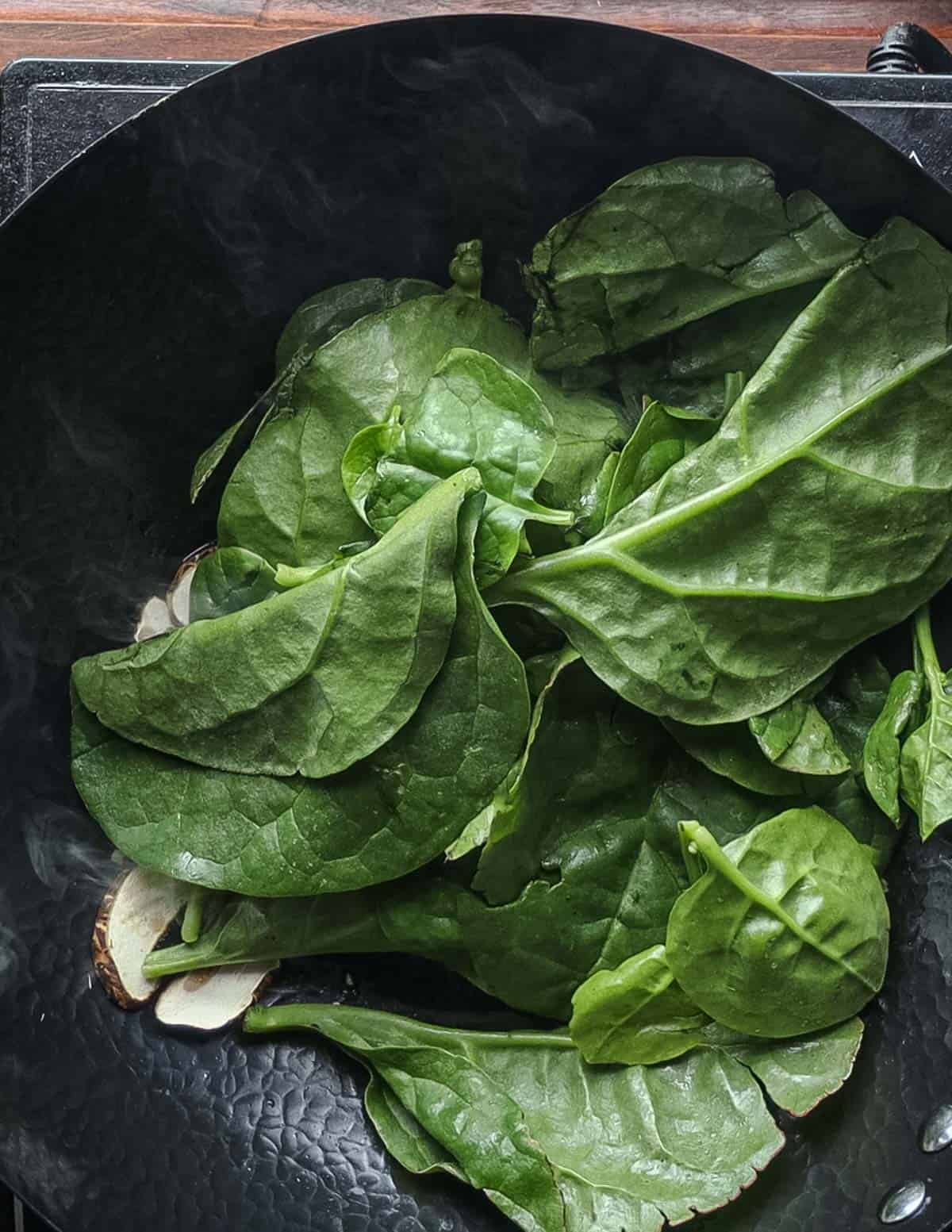
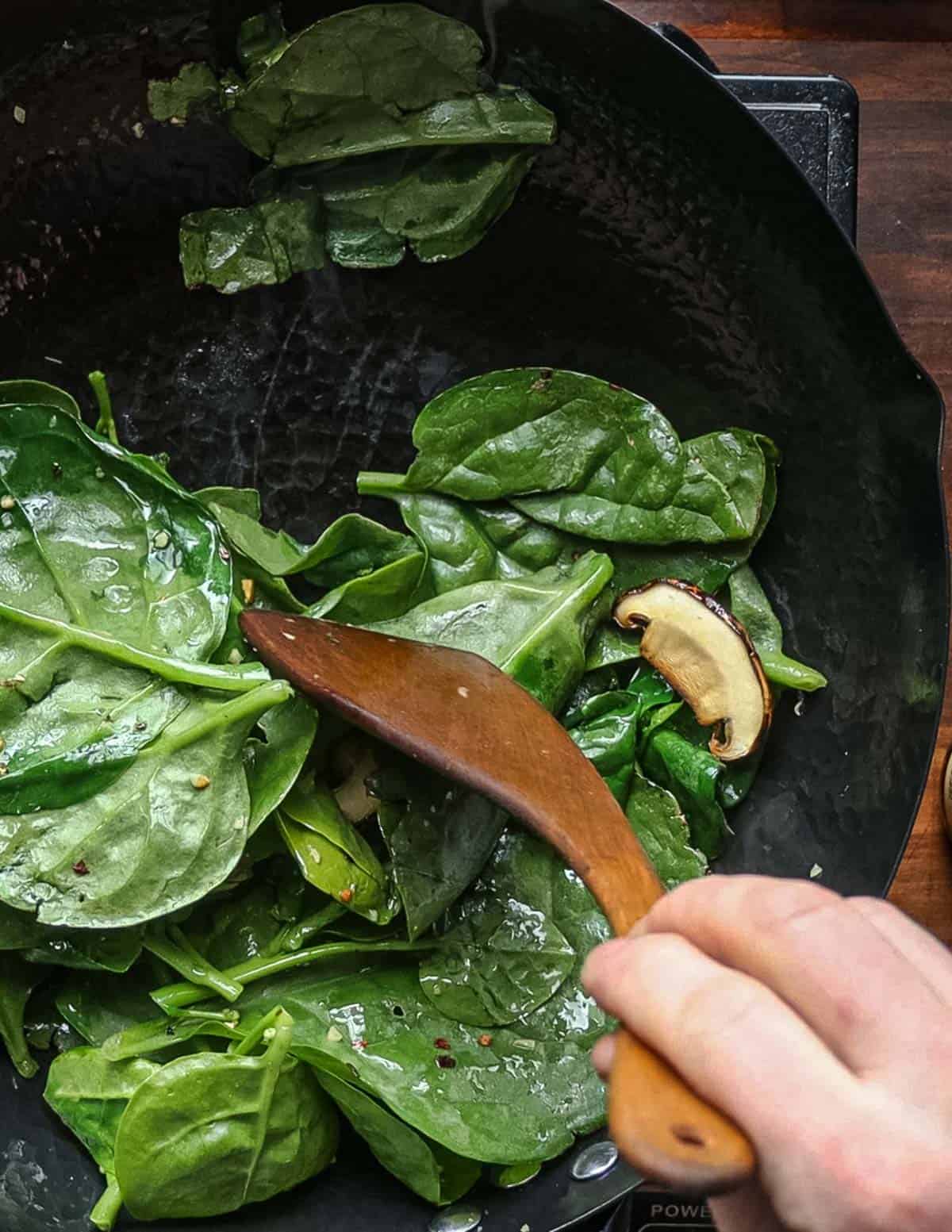
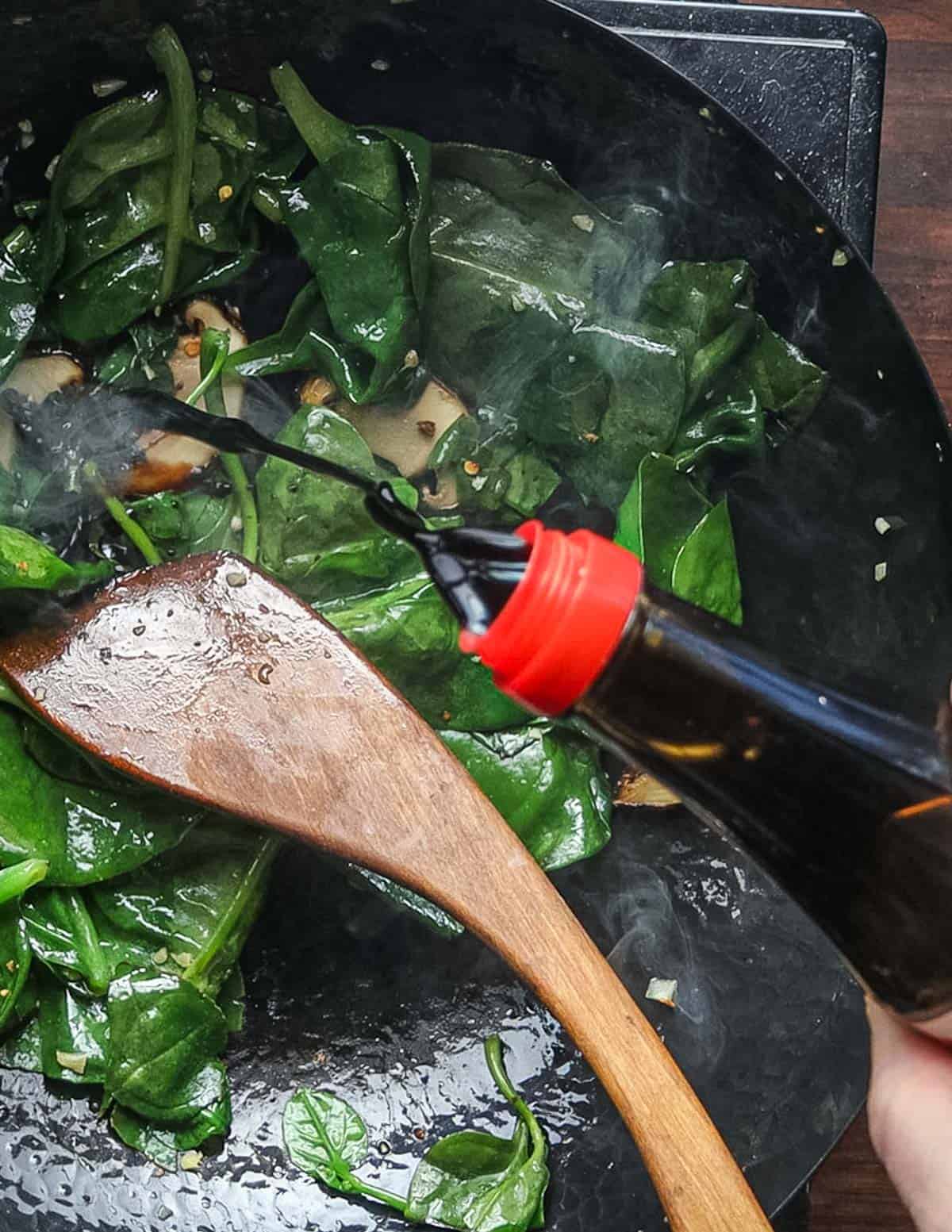
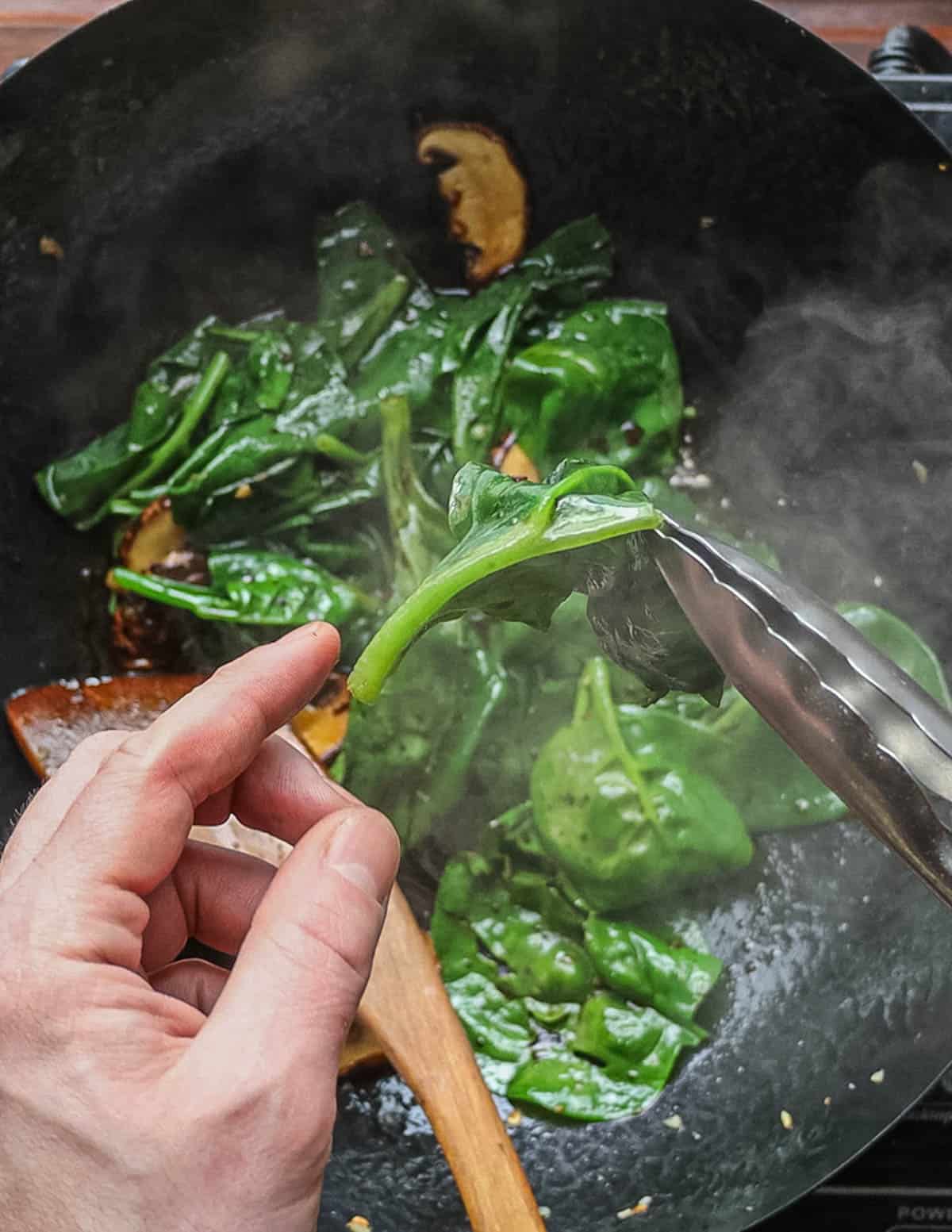
When the leaves are tender and taste good to you, garnish it with some sesame oil, toasted sesame seeds, and serve.
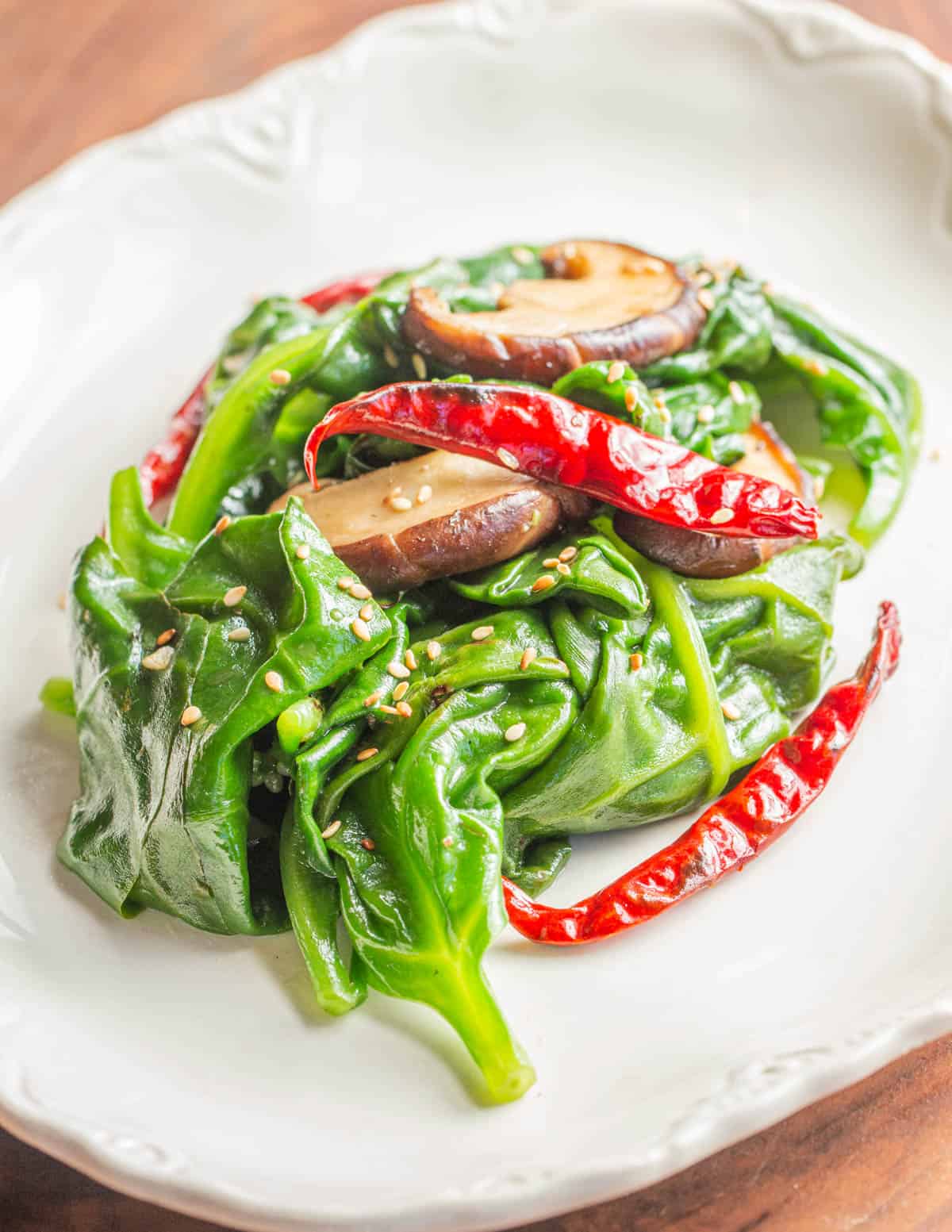
Give it a shot and I think you'll love these tender, juicy greens like I do. And if you already know this plant or have tips and tricks to share, please leave a comment.
Related Posts
Malabar Spinach Stir Fry with Shiitake Mushrooms
Equipment
- 1 Wok preferably carbon steel (this is the one I use)
Ingredients
- 1 Large Shiitake mushroom
- 1 tbsp Cooking oil such as grapeseed
- 1 tsp Minced fresh ginger
- 1 tsp Minced fresh garlic 1 small clove
- 6 oz Malabar spinach leaves
- 2 tsp Soy sauce a splash
- 1 pinch Crushed red pepper flakes or a small handful of dried red chili
- 1 tsp Toasted sesame oil or to taste
- 1 tsp Toasted sesame seeds to garnish, optional
Instructions
- Remove the stem and cut the mushroom into thick slices.
- Put the sliced mushrooms in a wok and heat without adding oil until the mushrooms are lightly browned, 1-2 minutes.
- Add the cooking oil, then the garlic and ginger and cook for a few seconds. If you want to add a few whole dried chilis, add them now.
- Add the Malabar spinach leaves and stir the pan to prevent the garlic from burning. Add the crushed red pepper flakes if using.
- Continue cooking over medium high heat, stirring occasionally until the greens are wilted, about 5 minutes.
- Add a splash of soy sauce and continue cooking until the liquid is evaporated.
- Taste a leaf and double check the seasoning. If stems are attached, make sure they're tender and taste good to you.
- Serve the greens and mushrooms garnished with sesame oil and toasted sesame seeds.


Susan
A friend gave me some small plants of Malabar spinach and we put them in my garden. I was surprised to find that they climbed! 🙂 I love the recipe! It was delicious. I had king mushrooms only so I used them. I’ll definitely make this again. Thank you for this recipe!
Alan Bergo
Hey thanks Susan.
Anisha
Hi Alan,
Thank you so much for this recipe. I was wondering why is spinach growing in vines and I wasn’t sure if it’s safe for consumption. The description of the flavour and recipe really helps. I’m trying it for sure 🙂
Thanks !
Alan Bergo
Thanks Anisha. It's a great plant.
Anisha
Hi Alan,
Thank you so much for this recipe. I was wondering why is spinach growing in vines and I wasn’t sure if it’s safe for consumption. The description of the flavour and recipe really helps. I’m trying it for sure 🙂
Thanks !
Charles Hudson
Thanks for the recipe…I grow the red vine variety in my garden…love it..
Alan Bergo
Hey thanks Charles. I'm so looking forward to finally planting my own this year instead of buying it.
JudyK
Beautiful looking dish of food! Do you know if it's in the same family as "Chaya", which was a climbing plant we enjoyed in Merida? The leaves were cooked like spinach, with stems removed, and they needed to cook longer than spinach, but kept their shape and color, even with long cooking.
Alan Bergo
Ah I know Chaya as a quelite, or one of the many wild plants grown and enjoyed in South America. My friend Hank Shaw has grown it. Chaya is Cnidoscolus aconitifolius so different genus and family than Basella spp which is in the Basellaceae.
Eleanor
Hello Alan
I have another wild green that grows prolifically in my Australian garden - warrigal greens. I use it in saag recipes and as a spinach substitute but it has to be blanched first as it is high in oxalates.
When it grows out of control I harvest, blanch and keep it in the freezer. Here is a link to an article about it: https://www.theguardian.com/lifeandstyle/australia-food-blog/2014/feb/02/bush-food-warrigal-greens
I intend trying it some of your recipes.
Alan Bergo
Thanks for sharing Eleanor, I'm going to look those up.
Jasmine K
I usually grow malabar spinach as it is much more heat resistant than regular spinach. I get my seeds from Fruition Seeds in Naples, NY, perfectly adapted to my zone as I live about an hour away. Thanks for the recipe!
Alan Bergo
Hey thanks for the reference on seeds Jasmine. It was so much fun cooking with these again this week. Been a while.